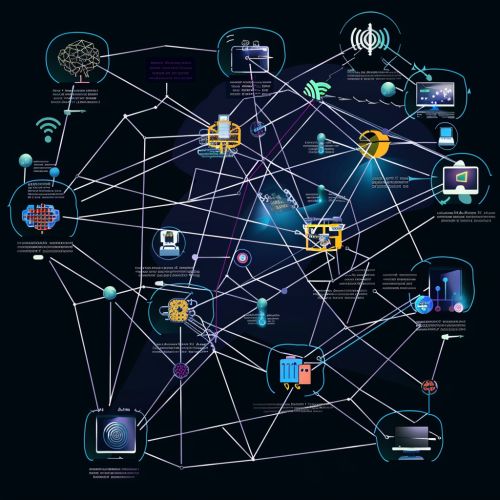Cognitive Architecture
Overview
Cognitive architecture refers to the underlying structure that defines the cognitive abilities and functionalities of an intelligent entity, such as a human or an artificial intelligence system. It is a blueprint that describes how cognition works, outlining the processes and mechanisms involved in perception, memory, attention, language, and problem-solving. Cognitive architectures are used in a variety of fields, including psychology, neuroscience, and artificial intelligence.


History and Development
The concept of cognitive architecture has its roots in cognitive psychology, a branch of psychology that focuses on mental processes such as "how people perceive, remember, think, speak, and solve problems". The term was first introduced in the 1970s, with the development of early models of human cognition like the Atkinson-Shiffrin model and the Adaptive Control of Thought-Rational (ACT-R) architecture.
Types of Cognitive Architectures
There are several types of cognitive architectures, each with its own unique structure and set of principles. These include:
Symbolic Architectures
Symbolic architectures, such as the Soar and ACT-R, are based on the premise that cognition involves manipulation of symbols in a rule-based manner. These architectures are often used in artificial intelligence research and cognitive modeling.
Connectionist Architectures
Connectionist architectures, such as the Parallel Distributed Processing (PDP) model, use networks of interconnected nodes (analogous to neurons) to model cognitive processes. These architectures are often used in neural network research and machine learning.
Hybrid Architectures
Hybrid architectures, such as the CLARION, combine elements of both symbolic and connectionist architectures. These architectures aim to capture the strengths of both approaches, providing a more comprehensive model of cognition.
Key Components of Cognitive Architectures
While the specific components can vary depending on the type of cognitive architecture, there are several key elements that are typically included:
Perception
Perception refers to the process of gathering and interpreting sensory information. In a cognitive architecture, this involves mechanisms for processing input from the environment and converting it into a form that can be used by other components of the architecture.
Memory
Memory involves the storage and retrieval of information. In a cognitive architecture, this typically includes both short-term (or working) memory and long-term memory, each with its own specific mechanisms and processes.
Attention
Attention refers to the ability to focus cognitive resources on specific information or tasks. In a cognitive architecture, this involves mechanisms for controlling the allocation of cognitive resources.
Language
Language involves the processing and production of linguistic information. In a cognitive architecture, this includes mechanisms for understanding and generating language.
Problem-Solving
Problem-solving involves the ability to use knowledge and reasoning to address challenges or achieve goals. In a cognitive architecture, this includes mechanisms for reasoning, planning, and decision-making.
Applications
Cognitive architectures have a wide range of applications, from understanding human cognition to developing intelligent systems. In psychology and neuroscience, cognitive architectures are used to model and simulate human cognitive processes, providing insights into how the mind works. In artificial intelligence, cognitive architectures provide a framework for designing intelligent systems that can perceive, learn, reason, and make decisions.
Future Directions
As our understanding of cognition continues to evolve, so too will cognitive architectures. Future developments may include more sophisticated models of cognitive processes, the integration of affective and social cognition, and the development of architectures that can adapt and evolve over time.
